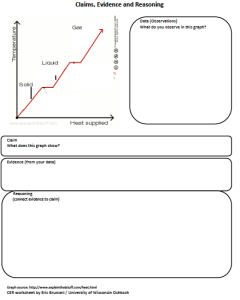This chapter focuses on collecting and analyzing evidence. For ECPK 420, the desired program outcomes we want to see a program meet are the NAEYC accreditation standards. You will gather evidence of quality through interviews & observations of the program in action You will report your findings or claims through the use of narrative and numerical ratings. As you read think about how you will collect and analyze the evidence from the six settings. Focus on the essential questions for the course:
- How are best practices as defined by the National Association for the Education of Young Children (NAEYC) and others, implemented in EEC licensed infant or toddler, center-based preschool, Head Start preschool, Montessori preschool and family childcare programs, as well as in a public-school kindergarten program?
- How do the different delivery systems differ?
- How are they the same?
- How would you describe the type of program you observed?
- How does it compare to what others are experiencing?
- How do I gather and present evidence to support claims?
Now read or watch:
- Elicker, J. & McMullen, M.B (2013, July) Appropriate and Meaningful Assessment in Family-Centered Programs. Young Children. 22-27.
- Watch:
- Teaching Channel (n.d.) Observing for Learning Video
- Teaching Channel (n.d.) Claims, Evidence, Reasoning Video
- Rambush, N. M. and Stoops, J. (1992). What Are the Essential Characteristics of an Authentic Montessori School?- An Examination of Tim Seldin’s List (Appendix A)
- Montessori Answers Website (n.d.)Things to Look for When Choosing a Classroom (personal website)
- Heen, S. (2015) How to use others’ feedback to learn and grow You Tube Video of a Ted Talk. If you want to improve learning is on figuring out how to receive feedback—even off-base or poorly delivered feedback—and use it to fuel growth.
- Explore the Resources for Students at the BSU writing studio.
Complete and Submit:
- Claims, Evidence, and reasoning worksheet. Available from Edutopia website 2012 article Designing Science Inquiry: Claim + Evidence + Reasoning = Explanation by Eric Brunsell.

- Your observation plan. (In Front Matter of Book)
Visit the following types of early childhood programs for at least 3 hours during a primary activity period where children are engaged in learning activities. You may need to schedule a follow-up visit to gather sufficient information to complete the portfolio narrative. When visiting remember to have the teacher or administrators sign your sign-off sheet. Program types include:
1. A EEC-regulated community center-based infant or toddler program (or a program approved by instructor). Early intervention programs are not appropriate. The infant/toddler program must serve typically developing children ages 4 weeks to 3 years.
2. A EEC-regulated community center-based preschool program (or a program approved by instructor). Must be a program primarily serving typically developing children between the ages of 2.9 to 5 years.
3. A Head Start preschool program for children between the ages of 2.9 to 5 years.
4. A Montessori preschool program for children between the ages of 2.9 to 5 years.
5. A EEC-regulated family childcare program with at least 4 children and at least 3 of the children must be 18 months or older and present on the day of the visit. Check before going!
6. A public-school kindergarten program. Must not be substantially separate kindergarten classrooms and kindergarten classrooms specifically set up to serve the district’s children with special needs population. This means that 40% or less of the children have IEP’s. Ask before visiting.
To find a program for observation go to the Department of Early Education and Care website to the link: Find Early Education and Care Programs.
Consider for class discussion:
- How will you persuade me that your ratings are accurate?
- How does the homework worksheet relate to the writing of the narratives?
RECEIVING FEEDBACK
We all want to hear we’re wonderful and without flaw. Hearing that we’re not, or that our writing is not, always stings, even when we’re genuinely interested in improving (we all secretly hope we have no room to do so). Try to remember to:
- Remain calm and don’t react to the initial sting of feedback. Once the sting fades, you can make use of what you’ve read.
- You may decide, after careful deliberation, that the feedback you received was inaccurate or no good. Fair enough. Just make sure you’ve done your best to seriously consider what you’ve read.
- Don’t take constructive feedback personally. Remember that the feedback you receive is only feedback of your writing and not of the writer. Don’t believe everything you do is bad. Embrace the idea that you can learn something from everyone.
What to do with the feedback you get
- Don’t be intimidated if I write a lot on your paper. I tend to make lots of comments.
- If you think you have major changes to make and you have time to make them, do it.
- Read ALL of the feedback that you get. Doing so may help you see patterns of error in your writing that you need to address and may help you improve your writing for future papers and for other classes.
- If you don’t understand the feedback you receive, by all means ask me. Feedback that you don’t understand is feedback that you cannot benefit from, so ask for clarification when you need it. Remember that I gave you the feedback because I want to help you become a better writer.
- Ultimately, the portfolio you will turn in will be your own. You have the final responsibility for its form and content. Take the responsibility for being the final judge of what should and should not be done with your narrative.
